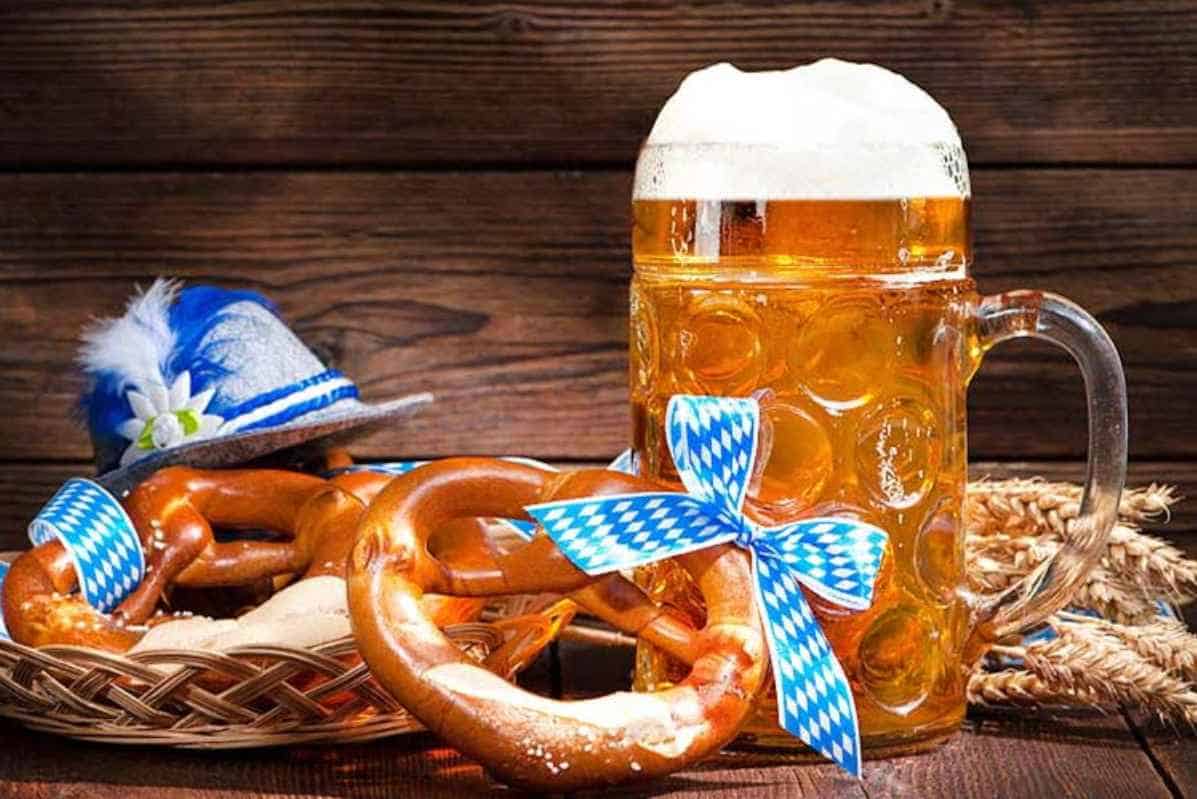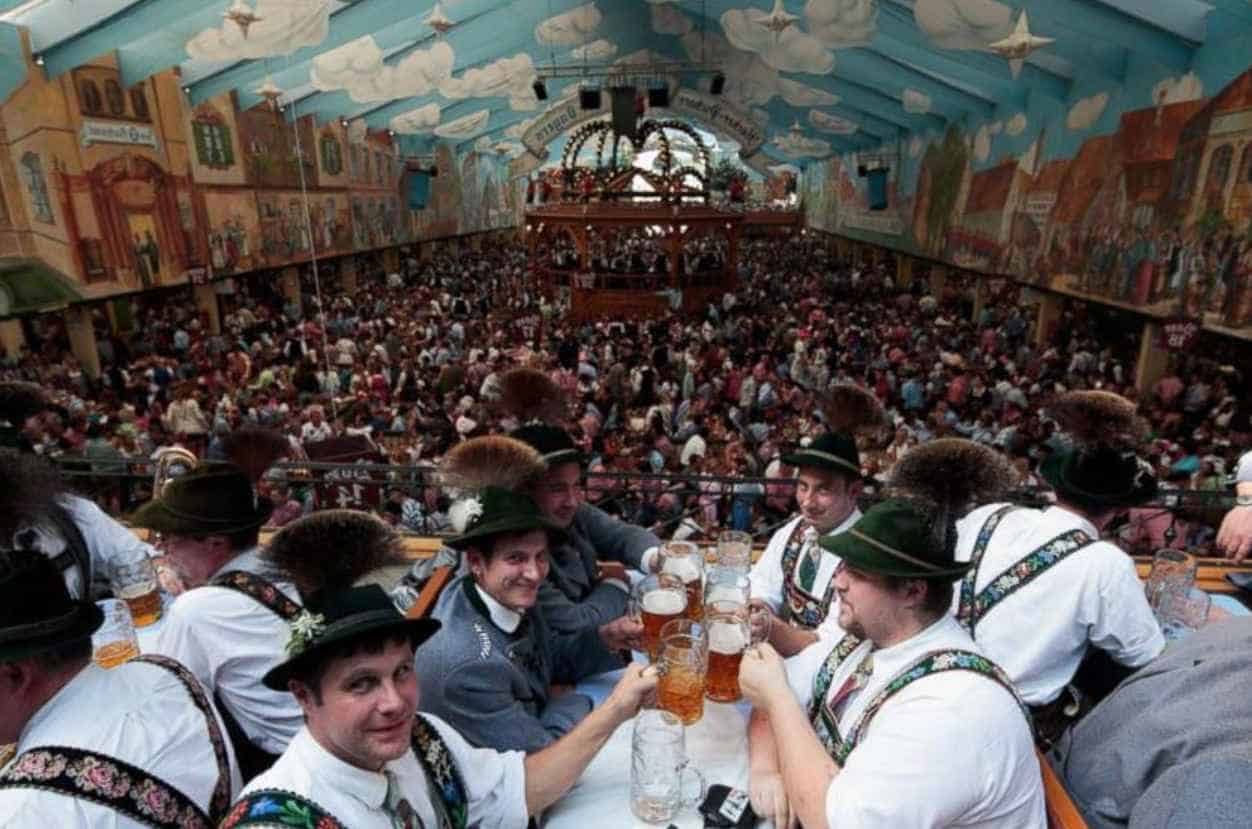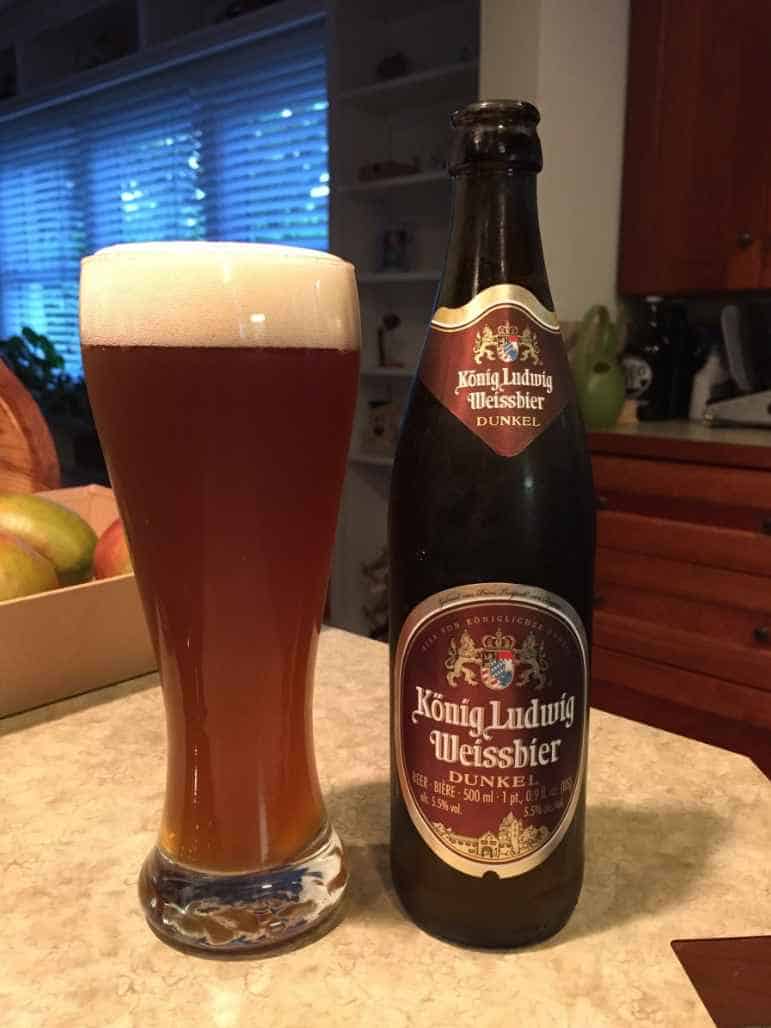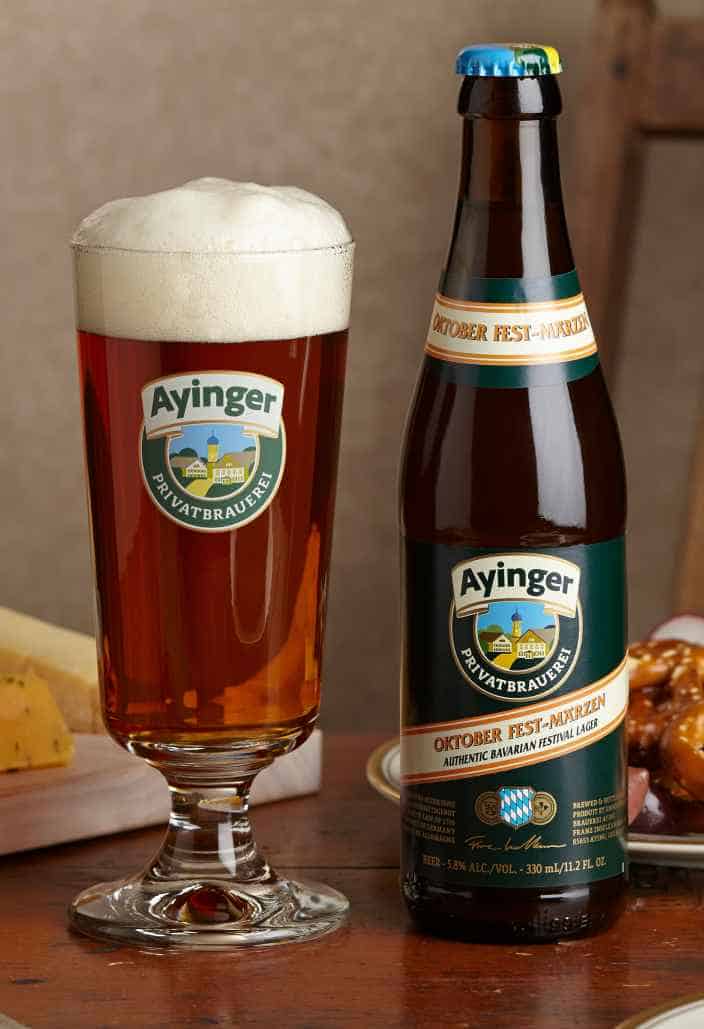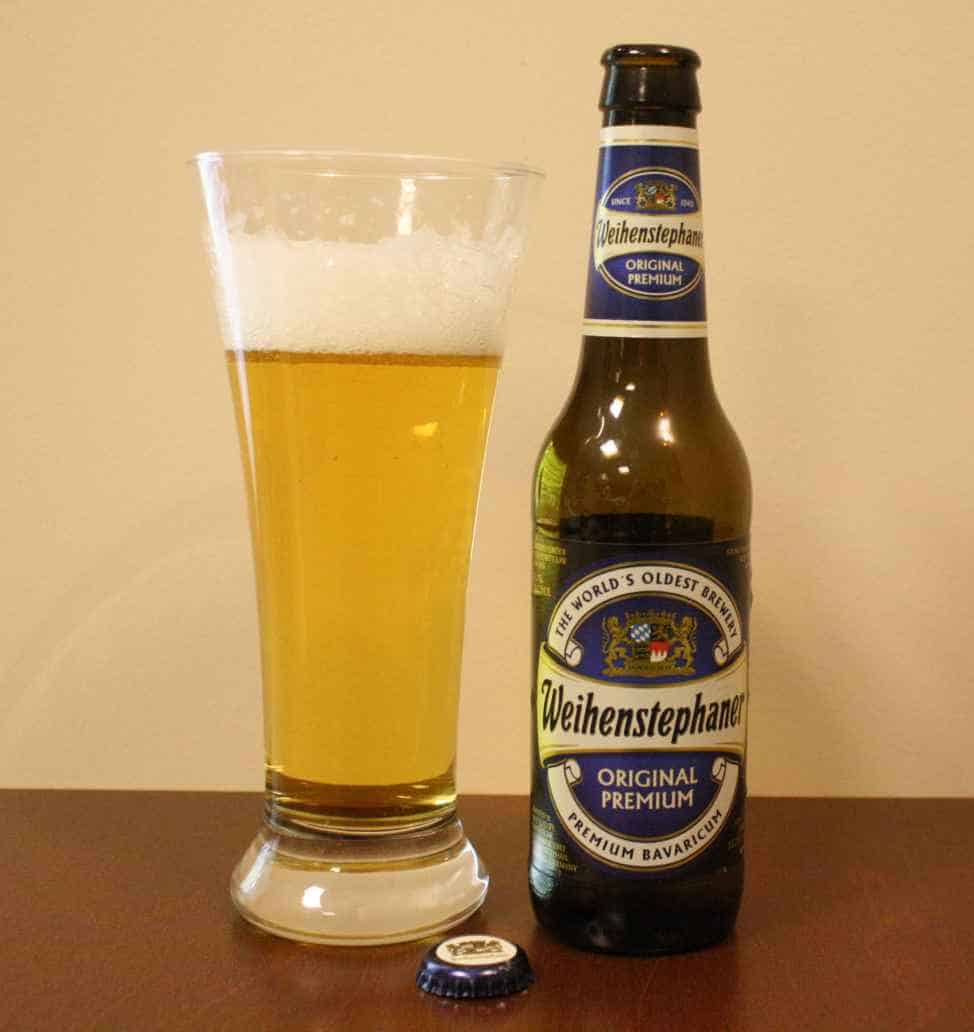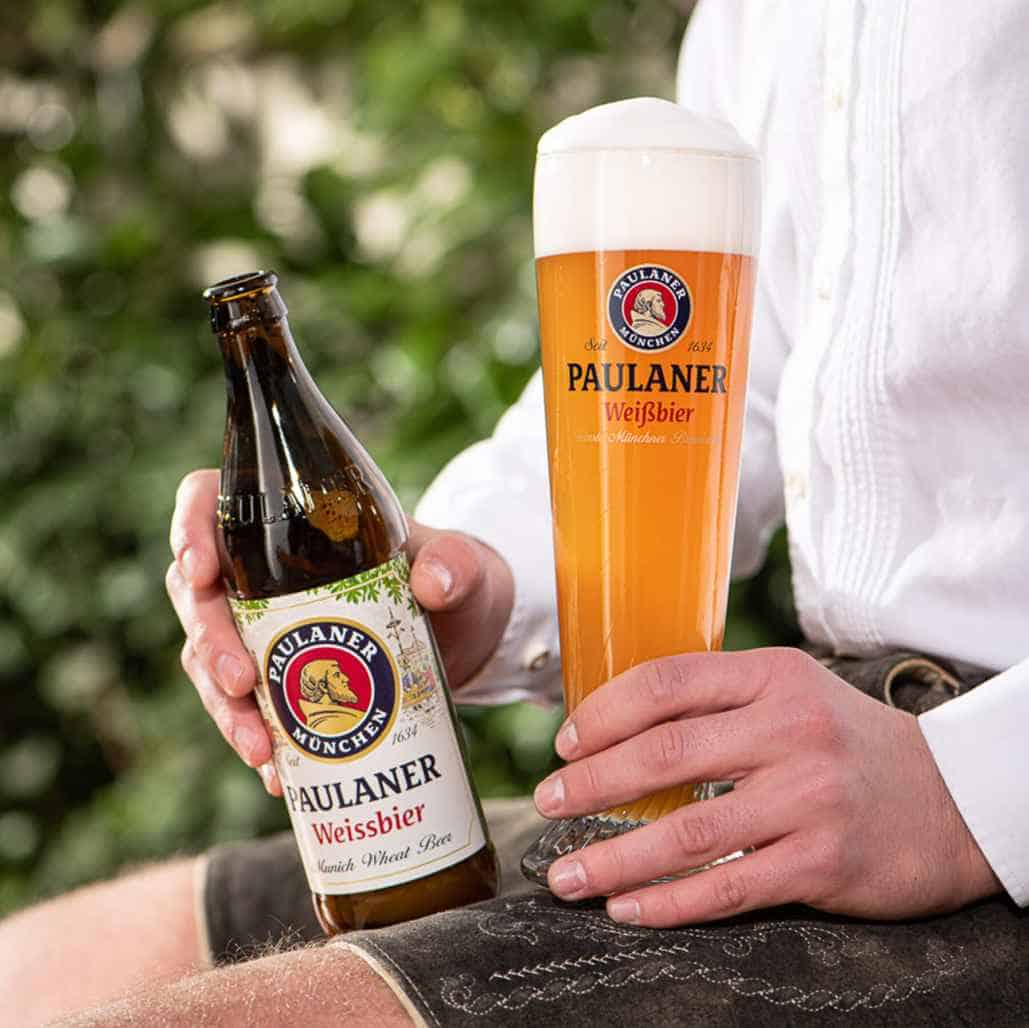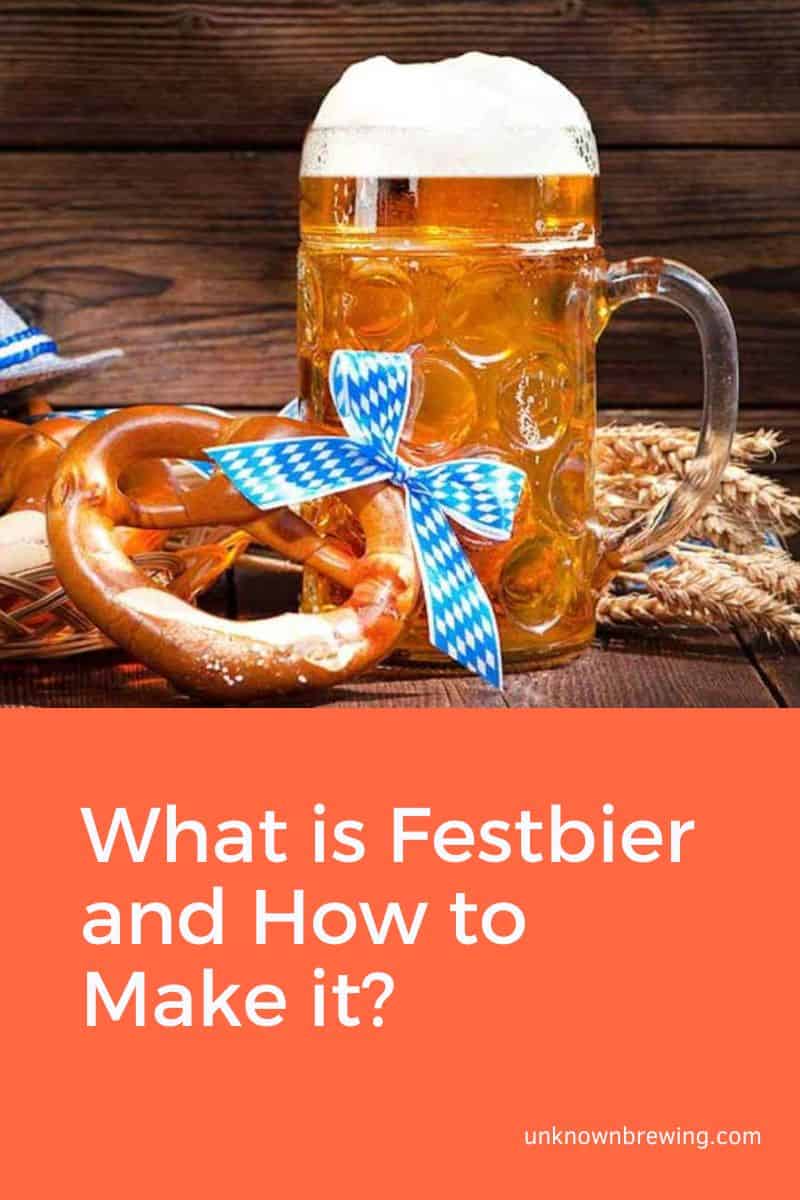Oktoberfest and Festbier go hand in hand. Festbier is German for “Festival Beer,” and it is the official beer of Oktoberfest. But what is Festbier?
Festbier is a traditional pale German lager. It is deep gold in appearance with impeccable clarity. Also known as Oktoberfestbier, Festbier is the official beer of Oktoberfest.
| Color Range | 4-7 SRM |
| Original Gravity | 1.054-1.057 OG |
| Final Gravity | 1.010-1.012 FG |
| IBU Range | 18-25 |
| ABV Range | 5-6% ABV |
| Appearance |
|
| Aroma |
|
| Flavor |
|
| Mouthfeel |
|
| Serving & Storage Temperature | 42-46°F |
| Shelf Life | 3-6 Months |
| Food Pairings |
|
Origins and History of Festbier
Festbier is German for festival beer. And as the name suggests, it is the official beer of Oktoberfest.
Festbier and Oktoberfest are so intertwined that the other name for the beer is Oktoberfestbier. We cannot discuss the origins of Festbier without tackling the history of Oktoberfest.
Oktoberfest is a beer festival held in Munich, Germany. The inaugural celebration was held on October 12th, 1810. On this day, Prince Ludwig I of Bavaria was to marry Princess Therese of Saxe-Hildburghausen.
Traditionally, brewers would begin their brewing process in the spring and allow the beer to lager in cool caves over the summer months, making it ready for consumption by October, just in time for Oktoberfest. Dunkel, a dark German lager, was the original beer style of Oktoberfest.
In 1841, Gabriel Sedlmayr, a brewer at modern-day Spaten Brewery, shifted Oktoberfest from Dunkel towards Marzen. In those days, pale lagers were all the rage. Marzen was the official beer of Oktoberfest until Festbier ousted it in the 1970s.
Today, Festbier is still a regular fixture in Oktoberfest. Various breweries around the world brew Festbier.
Below is a table listing popular Festbier beer brands.
| Festbier Brand | Brewery | Brewery Location |
| Oktoberfest Wiesn | Paulaner Brewery | Munich Germany |
| Oktoberfest | Hofbrau | Munich, Germany |
| Oktoberfestbier | Lowenbrau | Munich, Germany |
| Oktoberfestbier | Augustiner-Brau | Munich, Germany |
| Festbier | Weihenstephan Brewing Company | Freising, Germany |
| Festbier | Castle Island Brewing Company | Norwood, MA |
| Festbier | Gordon Biersch Brewing Company | San Jose |
Characteristics of Festbier
While this beer’s traits may vary from brewer to brewer, some common characteristics exist. Below are the common properties of Festbier:
- Beer Appearance: Festbier is deep gold with orangish characteristics. On the SRM scale, Festbier’s color ranges from 4-7. While Festbier is a pale lager, it is slightly darker than most pale lagers. Festbier is a remarkably clear beer. On the pour, it makes a white head that persists for a long time. Festbeir is often mistaken for the Marzen beer style. The Marzen is amber-colored, while Festbier is deep gold.
- Beer Aroma: Festbier has a sweet malty aroma with a wide range of toasty notes. These notes include caramel, toffee, and bread. Festbiers are lightly hopped, giving faint notes of flowers, spices, and herbs.
- Beer Flavor: Festbier has a sweet malty taste with bready and doughy notes. Festbier is lightly hopped. Expect moderate bitterness that balances well with the malt sweetness. As for hop flavor, Festbier gives off faint floral, spicy, and herbal notes.
- Beer Body: Festbier is a medium-bodied liquor with a smooth and creamy mouthfeel. The beer is moderately carbonated with low alcohol warmth.
- Alcohol Content: While Festbier is not a strong beer, it isn’t light either. Festbier’s alcohol content ranges from 5-6% ABV.
- Food Pairings: Due to its crisp and refreshing nature, Festbier complements dry foods like pretzels, pizzas, and bratwurst rye bread sandwiches. The beer contrasts nicely with spicy dishes like grilled chicken, barbequed beef, and battered fish. Festbier is the perfect beer to wash down mild cheeses like Gouda and Emmental. As for dessert food pairings, a Festbier complements nut tarts, sweet dessert bread, and toasted coconut flan.
- Service and Storage: For maximum enjoyment, Festbier should be served in a beer stein at 42-46°F. A keg of Festbier can retain its freshness for three to six months. However, it would be best if you stored the keg under temperatures between 34°F to 48°F.
Festbier vs. Other Oktoberfest Beers
Oktoberfest is an annual beer festival held in Munich, Germany. While Festbier is a popular Oktoberfest beer, it is not the only beer style associated with the German festival. But how does Festbier compare to the other Oktoberfest beers? Below is a comparison between Festbier and other Oktoberfest beers:
Festbier vs.Dunkel
Dunkel was the original Oktoberfest beer until Marzen ousted it in 1841. Dunkel is a dark lager with colors that range from deep copper to dark brown. While Festbier forms a white head, Dunkel creates a medium tan head. With regards to the mouthfeel, Dunkel has a fuller body.
Festbier vs. Marzen
The Marzen was first introduced to Oktoberfest in 1841 by Spaten Brewery. This transition ended the reign of Dunkel lagers. Marzen continued its reign over Oktoberfest until Festbier dethroned it in the 1970s.
Marzen is a lager made from Munich malt and other lightly roasted pale malts.
Festbier and Marzen are pale lagers with similar alcohol content levels (5-6% ABV). The most apparent distinction between Marzen and Festbier lies in beer color. Marzen beers are amber-colored, while Festbier equivalents are golden yellow. Marzen has a stronger hop presence than Festbier.
Festbier vs. Munich Helles
Helles is another pale lager served at Oktoberfest. Both beers are deep gold with similar clarity profiles. Both beer styles are brewed with continental hops and share similar bitterness levels.
With a lower alcohol content, Munich Helles (4-6% ABV) is lighter and crisper than Festbier (5-6% ABV). Festbier is also maltier than Munich Helles. Other than that, both beers give off bready and floral aromas.
Festbier vs. Weißbier
Also known as Hefeweizen, Weißbier is a German wheat beer. While it is not a traditional Oktoberfest beer, it is served at the German festival. While Festbier and Weißbier are golden beers, the latter is cloudy. Another difference between the two beers is Festbier is a lager while Weißbier is of the ale variety.
The Brewing Process of Festbier
Festbier is a lager, and its brewing process resembles other lagers. However, there are a few differences in the ingredients used and the fermentation process. Below is a breakdown of all the processes involved in brewing Festbier:
Brewing Ingredients
Festbier is uniquely German, down to the last ingredient. Let’s take a look at the ingredients involved in brewing Festbier.
Water makes up over 90% of the beer. It is critical to understand that different kinds of water contain various minerals. In the commercial brewing scene, brewers prefer Munich’s soft water because it yields a beer with a clean and crisp taste.
Festbier is brewed from malted barley. Different brewers use different grain bills. What’s common is that they use a combination of dark and light Munich and Vienna malts. This combination yields the rich malty sweetness of Festbier.
Festbier is hopped with Hallertau hops. This German noble hop dispels fruity, spicy, and floral aromas. As for yeast, Festbier uses a bottom-fermenting lager yeast, Saccharomyces pastorianus.
Mashing
Mashing is a crucial step in beer brewing. It involves using warm water to extract fermentable sugars and protein from malt. While the fermentable sugars are later converted to alcohol, the protein gives Festbier its medium body and thick head.
But before mashing, the Munich and Vienna malts are milled or crushed into coarse particles called grist. Milling helps increase the surface area for enzymatic action. After milling, the grist is soaked in warm water to initiate saccharification.
Saccharification is an enzyme-driven process that breaks down the starch in yeast into fermentable sugars. These sugars dissolve in the warm water, forming wort. Ultimately, the wort is separated from the now-spent grains through a process called lautering.
To learn more about lautering, check out our article on the mashing process.
Boiling
Boiling involves cooking the wort with hops to extract flavor. First, the brewer boils the wort for about 90 minutes. Then they throw in the bittering hops and let them cook for 60 minutes.
Hops have chemical compounds called alpha acids. These are the chemicals responsible for beer bitterness. Boiling hops for 60 minutes is sufficient for alpha acid extraction. If you want more bitterness, cook the hops for longer.
Next, the brewer adds the flavoring hops and lets them boil for 30 minutes or less. These short boils extract hop oils, which carry the essence and flavor of hops. For a stronger flavor, the brewer adds more hops. After boiling, the wort is cooled, and the spent hops are sieved out.
Fermentation
Here, the brewer pitches lager yeast and seals the fermentation tank. Typically used to make Festbier, lager yeast ferments at temperatures between 45°F and 55°F. At warmer temperatures, fermentation slows down.
The primary fermentation takes one to two weeks. After this period, the Festbier is transferred to another tank for secondary fermentation or lagering. Festbier lagering can take several weeks or several months, depending on the brewer’s technique.
Conclusion
Festbier is one of the traditional beers served at Oktoberfest. It is a golden lager with superb clarity. Festbier is a lager, and it is brewed similarly to other lagers. Being a traditional German brew, brewers use German malts and hops to brew a crisp and refreshing Festbier.
Have you ever tried the Festbier beer style? Please share your experiences in the comment section below.

As a homebrewer, Michael would get frustrated about the lack of brewing information on the internet. After hundreds of gallons of spoilt batches, Micheal had enough. And he founded Unknown Brewing as a resource for homebrewers.
